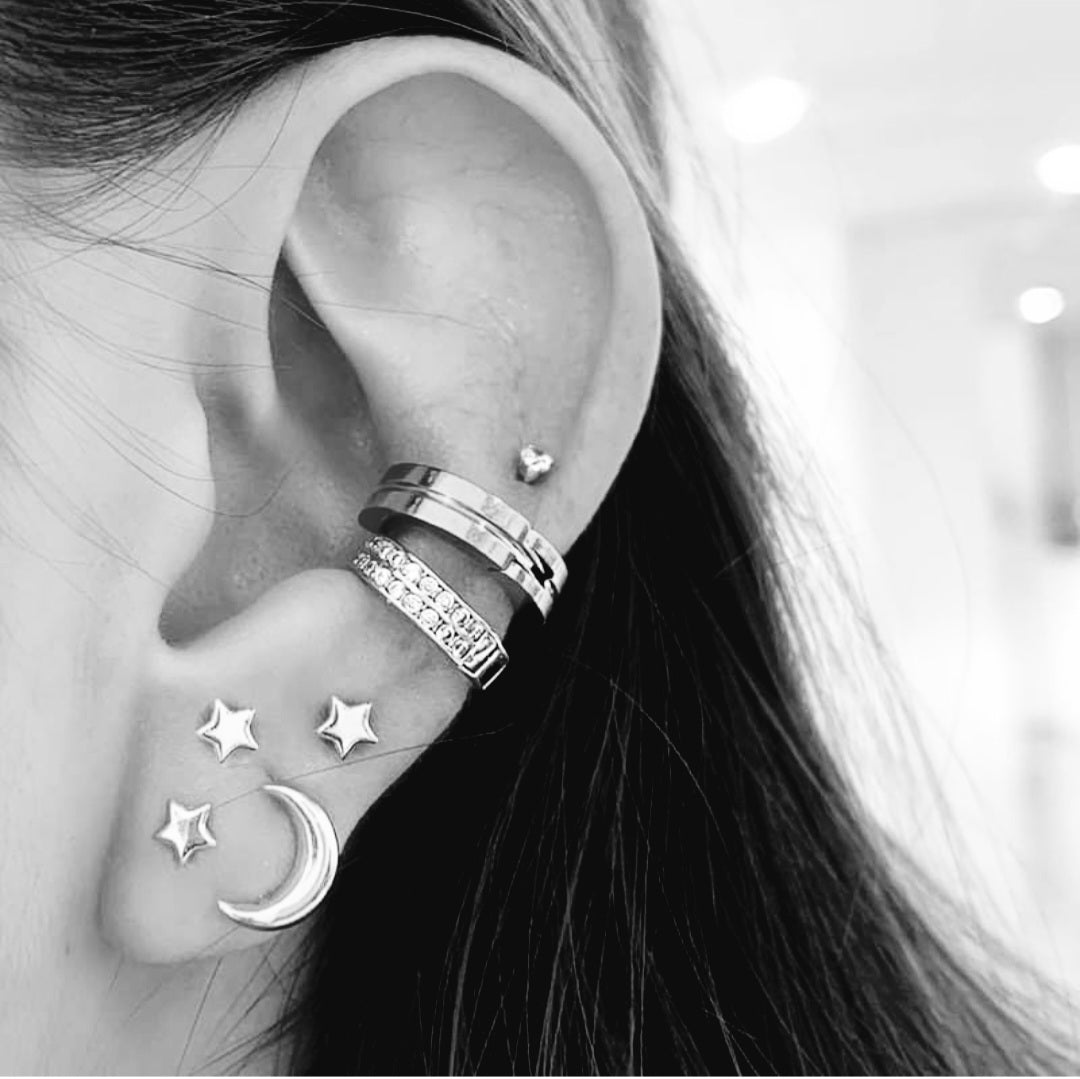
Body Jewellery Materials
Share
Exploring Piercing Jewellery Materials and Their Unique Uses
Introduction: Body piercing has evolved into a captivating form of self-expression, with jewellery playing a pivotal role in defining personal style. The wide array of materials available for piercing jewelry allows enthusiasts to curate a collection as diverse as their individuality. In this exploration of piercing jewelry, we'll delve into the various materials, their unique characteristics, and the purposes they serve in the world of body adornment.
-
Surgical Stainless Steel:
- Characteristics: Durable, corrosion-resistant, and hypoallergenic.
- Uses: Ideal for initial piercings due to its biocompatibility and resistance to tarnish or discoloration. Commonly used for a wide range of piercings, including ear, nose, and belly button.
-
Titanium:
- Characteristics: Lightweight, corrosion-resistant, and hypoallergenic.
- Uses: Suitable for those with metal sensitivities, titanium is often chosen for its vibrant colors and versatility. It is a popular choice for various piercings, including facial and cartilage piercings.
-
Gold (Yellow, White, Rose):
- Characteristics: Classic, elegant, and malleable.
- Uses: Gold offers a touch of luxury and is favored for its timeless appeal. Yellow gold is a traditional choice, while white and rose gold provide modern alternatives. Suitable for various piercings, particularly those requiring a touch of sophistication.
-
Sterling Silver:
- Characteristics: Affordable, malleable, and prone to tarnishing.
- Uses: While sterling silver is a budget-friendly option, it requires careful maintenance due to tarnishing. Best suited for well-healed piercings and occasional wear to avoid prolonged exposure to body fluids.
-
Niobium:
- Characteristics: Lightweight, corrosion-resistant, and hypoallergenic.
- Uses: Known for its vibrant colors, niobium is an excellent choice for those with sensitive skin. Popular for various piercings, including cartilage and lip piercings.
-
Glass:
- Characteristics: Smooth, non-reactive, and versatile.
- Uses: Often used for plugs, tunnels, and septum retainers, glass provides a sleek and modern look. It is hypoallergenic and easy to sterilize, making it suitable for a variety of piercings.
-
Organic Materials (Wood, Bone, Horn):
- Characteristics: Unique, lightweight, and natural.
- Uses: Offering a distinctive aesthetic, organic materials are commonly used for ear plugs, septum tusks, and ear spirals. These materials add a touch of earthiness to body adornment.
-
Plastics (Acrylic, PTFE, BioFlex):
- Characteristics: Lightweight, flexible, and affordable.
- Uses: Ideal for those with metal allergies, plastic jewelry is often used for initial piercings. However, it should be avoided for long-term wear as it may harbor bacteria and cause irritation.
Conclusion: The world of piercing jewelry is a vibrant tapestry woven with a multitude of materials, each offering a unique set of characteristics and aesthetic qualities. Whether you prefer the timeless elegance of gold, the modern appeal of titanium, or the earthy charm of organic materials, the key to a successful piercing experience lies in understanding the properties of different materials and selecting jewelry that aligns with your style and the specific needs of your piercings. Embrace the diversity, express your individuality, and let your jewelry tell a story as unique as you are.